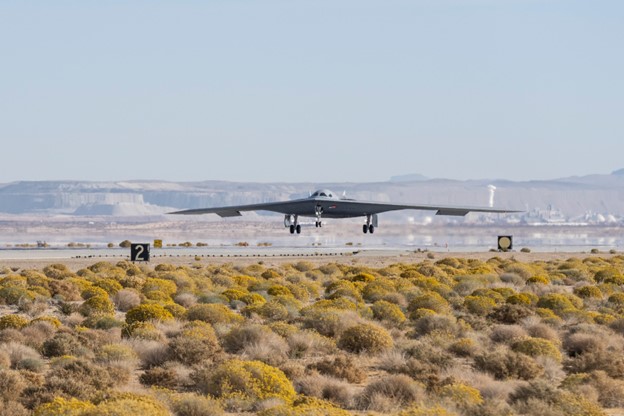As Iran is on the brink of becoming a nuclear power, The U.S faces a combined atomic weapons threat greater than that endured during the Cold War.
In addition to Russia’s largest in the world nuclear arsenal, and the reality that China now has more land-based ICBMs than America, rogue and unpredictable regimes in North Korea and Iran now pose a serious danger.
In September, Iran Watch warned that “Iran’s nuclear program has reached the point at which, within about one week, Iran might be able to enrich enough uranium for five fission weapons…Intelligence agencies have long been unanimous in one prediction: If Iran makes nuclear weapons, it would do so at secret sites.”
Iran would join North Korea in becoming a pariah nuclear power. The Arms Control Association notes that “North Korea is estimated to have assembled 50 nuclear warheads, as of January 2024, and to have the fissile material for an estimated 70-90 nuclear weapons, as well as advanced chemical and biological weapons programs. In the past several years Pyongyang has accelerated the pace of ballistic missile testing. North Korea has the capability to deliver nuclear weapons on a variety of land-based missile systems, including intercontinental ballistic missiles with ranges capable of targeting the continental United States, and is developing submarine-launched ballistic missiles (SLBMs).”
Earlier this year, General Anthony Cotton, Commander of The U.S. Strategic Command testified before the Senate that China has more land-based ICBM’s than the United States.
Startling as that reality is, it’s only part of Beijing’s comprehensive arsenal. Overall, General Cotton noted, “The PRC currently has a nuclear triad consisting of bombers, submarines, and land-based missiles. Its H-6N bomber is equipped to carry air-launched ballistic and cruise missiles, and the PRC is actively developing a strategic stealth bomber, the H-20. The PRC also has six JIN-class ballistic missile submarines (SSBNs) equipped with new third-generation JL-3 submarine launched ballistic missiles (SLBMs), capable of striking the continental United States from PRC littoral waters. Additionally, the PRC has approximately 1,000 medium and intermediate-range dual-capable conventional or nuclear ballistic missiles capable of inflicting significant damage to U.S., Allied, or partner forces and homelands in the Indo-Pacific. As I reported to Congress in January 2023, the PRC’s arsenal of land-based intercontinental ballistic missile (ICBM) launchers currently exceeds that of the United States…Our forces and capabilities underpin and enable all other joint forces operations. We do this in the face of challenges unlike anything America has ever encountered. We are confronting not one, but two nuclear peers, the Russian Federation and the People’s Republic of China. This reality, combined by missile developments in North Korea, Iran’s nuclear ambitions, and the growing relationships amongst those nations, adds new layers of complexity to our strategic calculus. It also raises the possibility of simultaneous conflicts with multiple nuclear armed adversaries. The PRC is surpassing the United States and its number of fixed intercontinental ballistic missile launchers. And projections indicate its nuclear arsenal would encompass approximately 1,000 warheads by 2030.
Russia has the world’s largest nuclear arsenal, a result of treaty made with President Obama and Moscow in 2010. As Moscow’s conventional forces face attrition in Ukraine, its reliance on nuclear weapons will only grow larger.
As these threats grow every larger and more diverse, the move to modernize the American nuclear deterrent continues to face obstacles. The Center for Strategic and International Studies reports that “delays, budget overruns, supply chain issues, and significant workforce and infrastructure constraints across both the defense and national lab sectors are leading to an increasing disconnect between policy debates over what might be needed in the future and the reality of what the existing workforce and infrastructure can support.”
Weakness and delay in modernizing America’s nuclear deterrent accelerates and magnifies the growing danger from China, Russia, North Korea and Iran, who should be seen as a combined threat.
Photo: U.S. B-21 Raider nuclear-capable bomber
